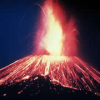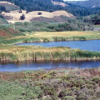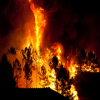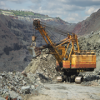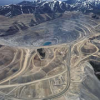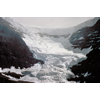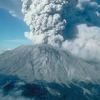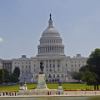AGI policy news briefs summarize geoscience policy activities and related events in Washington, D.C. as part of an effort to keep AGI member societies and other audiences informed about relevant federal policy and legislative updates.
To search for news briefs for a specific Monthly Review digest, enter the year and month of the Monthly Review in the search fields below.
Please note that as of April 2019, the publication of news briefs and the monthly review has been suspended. Policy news from April 2019 back to 2010 is available below; to browse Monthly Reviews from 1996 through 2010, please visit the Monthly Review Archive.
On September 17, Senate Committee on Energy & Natural Resources Chairman Senator Lisa Murkowski (R-AK) and Ranking Member Senator Maria Cantwell (D-WA) introduced their National Volcano Early Warning and Monitoring System Act (S.2056). On September 22, they discussed the bill in a hearing with the committee.
On September 15, Senator Lisa Murkowski (R-AK) introduced a resolution (S.Res.562) officially designating the week of October 9-15, 2016, as Earth Science Week (ESW). The resolution successfully passed the Senate by unanimous consent on September 28.
The House Energy and Commerce Committee’s Subcommittee on Energy and Power held a hearing this September to discuss the Department of Energy’s (DOE) role in national, economic, and energy security.
September 15, 2016
Secretary of the Interior Sally Jewell approved Phase I of the Desert Renewable Energy Conservation Plan (DRECP) this September.
House and Senate conferees for the Energy Policy Modernization Act met this September to discuss the progress they had made on reconciling the House (H.R. 8) and Senate (S. 2012) versions of the bill.
The House Science, Space, and Technology Committee’s Subcommittee on Space held a hearing on September 7, which assessed how previous legislation has impacted the private sector’s ability to obtain licenses and data for commercial remote sensing purposes.
On September 6, the U.S. District Court for the Central District of California issued an order to the Obama Administration calling for further environmental review of the effects of hydraulic fracturing, or fracking, in California.
The National Park Service celebrated its centennial on August 25, 2016.
The National Oceanic and Atmospheric Administration (NOAA) recently launched its National Water Model (NWM), a new hydrologic model that the agency claims will yield the “biggest improvement in flood forecasting the country has ever seen.”
Senators Mike Crapo (R-ID), Jim Risch (R-ID), and Ron Wyden (D-OR) spoke optimistically that a House-Senate conference committee can work to resolve differences on the North American Energy Security and Infrastructure Act of 2016 (S. 2012 & H.R. 8).
The Western Energy Alliance (WEA) filed a lawsuit in the U.S. District Court for New Mexico to challenge the Bureau of Land Management (BLM) for not holding quarterly oil and gas lease sales.
Thirteen states have sued the Environmental Protection Agency (EPA) over three new updates to the New Source Performance Standards (NSPS) under the President’s Climate Action Plan: Strategy to Reduce Methane Emissions and the Clean Air Act.
The Environmental Protection Agency’s (EPA) Science Advisory Board (SAB) released its final report assessing EPA’s recent study of potential impacts of hydraulic fracturing for oil and gas on drinking water resources.
The Department of the Interior’s (DOI) Office of Surface Mining Reclamation and Enforcement (OSMRE) has issued guidance suggesting that states move away from self-bonding, or the act of putting aside cash, bonds, or other securities for mining reclamation using their current financial health as collateral.
President Barack Obama announced his intent to appoint Dr. Jackie Richter-Menge to the United States Arctic Research Commission (USARC).
The United National Education, Scientific, and Cultural Organization (UNESCO) World Heritage Centre and the International Union for Conservation of Nature (IUCN) are calling for the creation of the first oceanic World Heritage Sites.
The Council of State Governments’ (CGS) Southern and Midwestern Legislative Conferences hosted a webinar to explore nuclear waste storage solutions.
The House Natural Resources Subcommittee on Energy and Mineral Resources held a hearing to discuss the Public Land Renewable Energy Development Act (H.R.2663), a bipartisan bill with 67 cosponsors that was introduced by Rep. Paul Gosar (R-AZ) in 2015.
The House Environment and the Economy Subcommittee held a hearing to examine implementation of the Comprehensive Environmental Response, Compensation, and Liability Act (CERCLA), commonly known as Superfund.
The House Natural Resources Committee on Water, Power, and Oceans Subcommittee met to discuss conflicting proposals between the U.S. Fish and Wildlife Service (USFWS) and the National Marine Fisheries Service (NMFS) on water release from the Shasta Dam.
The House Transportation and Infrastructure Committee held a hearing on the Coast Guard’s Arctic capabilities led by Chairman Duncan Hunter (R-CA) and Ranking Member John Garamendi (D-CA).
The Hazards Caucus Alliance, a network of organizations that promotes nationwide natural disaster resilience, held a briefing to highlight the role that science plays in protecting communities that are vulnerable to lahars.
Senator Lamar Alexander (R-TN) introduced a bill (S. 3169) that would authorize new basic energy research funding for the Department of Energy (DOE) Office of Science programs by eliminating the long-standing wind production tax credit (PTC) that has helped to expand wind power production in recent years.
The Solar Fuels Innovation Act (H.R.5638) and the Electricity Storage Innovation Act (H.R.5640) passed the House by voice vote this July. The bills, which require the Department of Energy (DOE) to carry out two new basic research initiatives, received bipartisan support.
The Department of the Interior (DOI) released their final Arctic Rule regulating exploratory drilling on the Arctic Outer Continental Shelf (OCS).
With supermajority approval, the House Chamber passed the Bureau of Land Management Foundation Act (H.R. 3844) to address the issue of acid mine drainage from an estimated 500,000 abandoned mine operations in the U.S.
The House Committee on Science, Space, & Technology held a hearing to discuss the National Oceanic and Atmospheric Administration (NOAA) and Department of Defense’s (DOD) current and future satellite missions.
The House Energy and Commerce Subcommittee on Environment and the Economy held a hearing led by Subcommittee Chairman John Shimkus (R-IL) and Subcommittee Ranking Member Paul Tonko (D-NY) to gather information in order to move forward with federal licensing of a nuclear waste repository at Yucca Mountain, Nevada.
The House Natural Resources Subcommittee on Energy and Mineral Resources held a hearing on the Innovation in Offshore Leasing Act (H.R. 5577).
The Senate Committee on Commerce, Science, and Transportation held a markup of the American Innovation and Competitiveness Act (S. 3084) and a number of other bills on June 29.
The Senate Indian Affairs Committee held a hearing led by Chairman John Barrasso (R-WY) to discuss bills addressing contentious tribal water rights in Montana and Arizona (S. 3013 and S. 2959) and repealing obsolete laws relating to Native Americans (S. 2796).
The Senate Subcommittee on Public Lands, Forests, and Mining held a hearing to evaluate the Bureau of Land Management’s (BLM) sage grouse conservation amendments and address concerns over the incorporation of individual state plans to the federal initiative.
The Senate Committee on Energy and Natural Resources convened to receive testimony on the Wildfire Budgeting, Response, and Forest Management Act (S. ___) put forward by Chairman Lisa Murkowski (R-AK) and Ranking Member Maria Cantwell (D-WA).
The U.S. District Court for Wyoming ruled that the Department of the Interior (DOI) and Bureau of Land Management (BLM) have no authority to regulate hydraulic fracturing, commonly known as “fracking,” on public and tribal lands.
The White House Council of Economic Advisers (CEA) released a report entitled, "The Economics of Coal Leasing on Federal Lands: Ensuring a Fair Return to Taxpayers".
The House Science, Space, and Technology Committee held an oversight hearing this June to examine the Environmental Protection Agency’s (EPA) scientific integrity and accountability.
The Advances in Earth Science Coalition, a group of professional geoscience societies and federal agencies, held a briefing to discuss how earthquake, air quality, and environmental data can inform policy making on natural resource management and disaster preparedness.
The Congressional Budget Office (CBO) has released a report outlining the projected costs of the Senate’s reauthorization of the Water Resources Development Act (WRDA). CBO projects the bill will cost an estimated $10.6 billion over the next decade.
Nearing the end of President Obama’s second term, the Office of Press Secretary has released an impact statement listing 100 Examples of President Obama’s Leadership in Science Technology and Innovation.
Bureau of Land Management (BLM) Director, Neil Kornze, faced tough questions during a Senate Energy and Natural Resource Committee hearing this June, where committee members were able to question him about the agency’s new Planning 2.0 rule.
President Barack Obama celebrated the National Park Service’s (NPS) upcoming 100th anniversary at Yosemite National Park this June. The Obama Administration and House and Senate Appropriations Committees have included language in their budgets to increase funding for NPS in FY 2017.
The International Resource Panel’s (IRP) working group on Land and Soils released a report outlining tools and policies for utilizing land resources sustainably into the future.
The House Committee on Science Space and Technology voted overwhelmingly to pass the NSF Major Research Facility Reform Act of 2016 (H.R. 5049).
The National Oceanic and Atmospheric Administration (NOAA) held their Monthly Climate Briefing telecast summarizing NOAA’s May U.S. and global climate analyses, monthly and seasonal forecasts, and the outlook for La Niña development.
The House and Senate Appropriations Committees each passed their fiscal year (FY) 2017 Interior, Environment, and Related Agencies appropriations bills this June, allocating funding for BLM, BOEM, BSEE, EPA, NPS, the Smithsonian Institution, and USGS from October 1, 2016 through September 30, 2017.
The Senate Committee on Commerce, Science and Transportation held an executive session to consider the Coastal Coordination Act of 2016 (S. 3038), which would update and reauthorize the Coastal Zone Management Act (CZMA).
The House Committee on Science, Space and Technology’s Subcommittee on Energy held a hearing to discuss emerging energy technologies in the United States.

